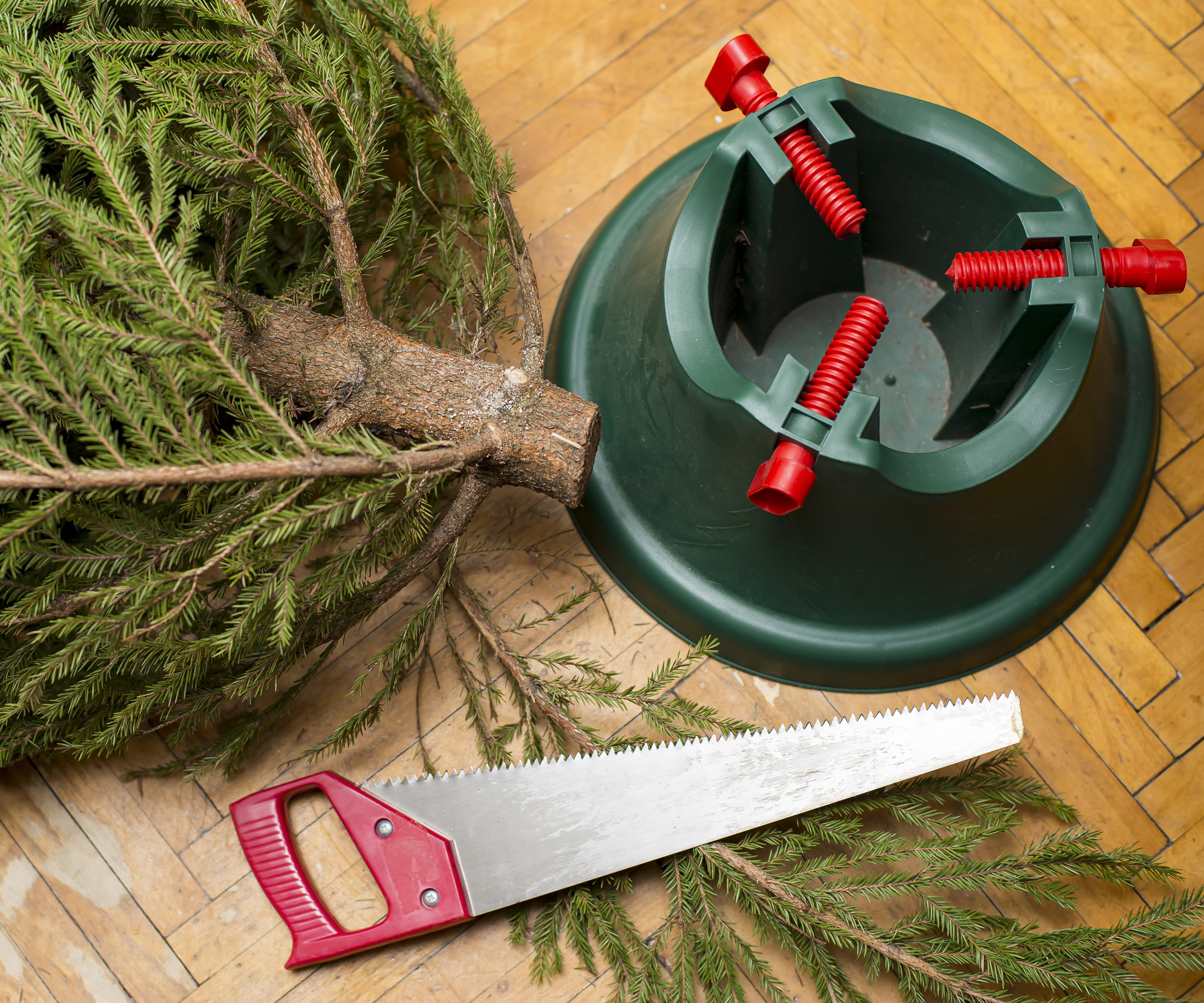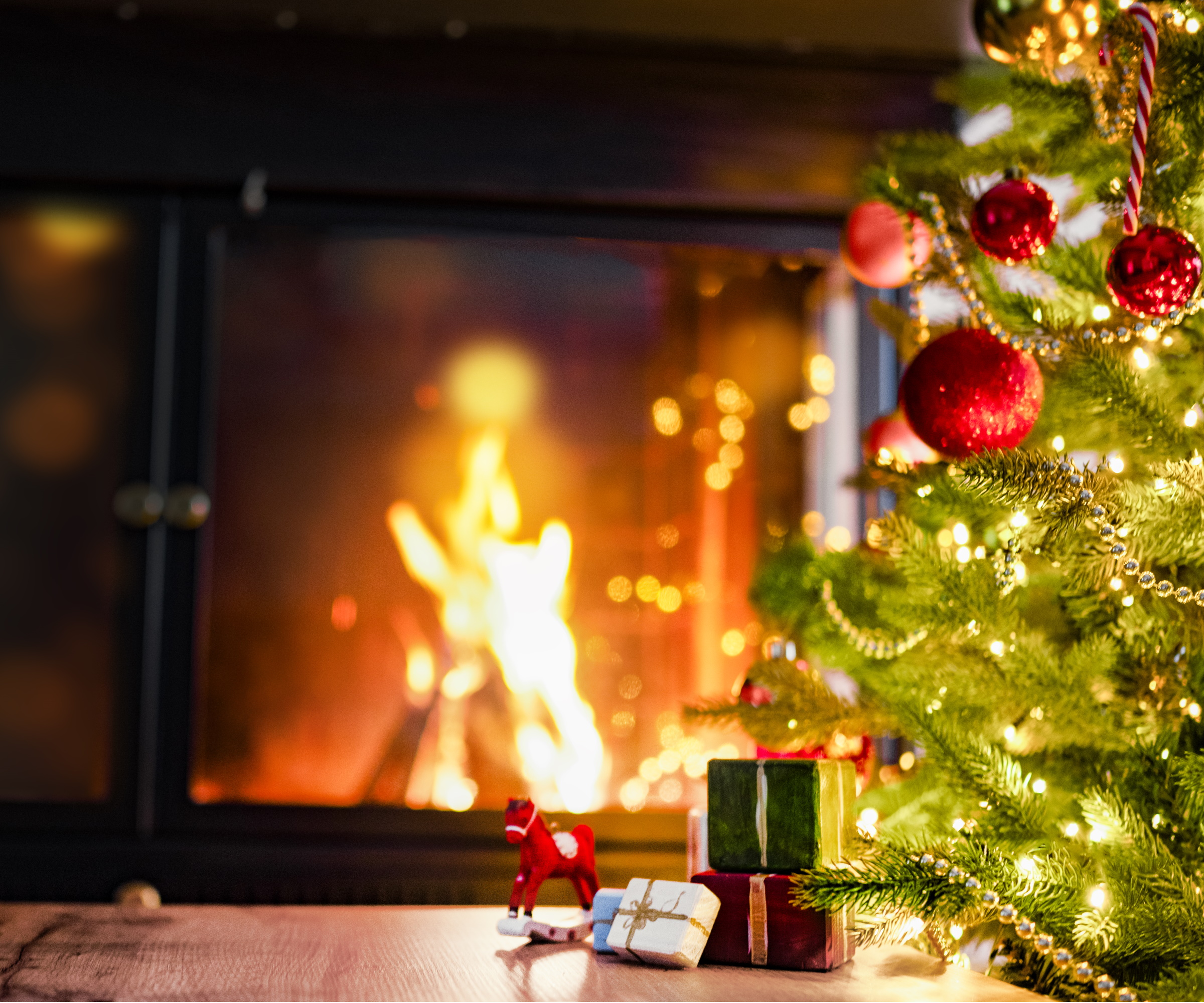
In the buzz of finding the perfect tree, taking in the pine-filled scent and getting home to decorate this Christmas staple, there are likely a few common misjudgements you're making without realizing.
Even if you have plans to recreate your favorite Christmas tree idea, not taking the time to properly purchase, transport and set-up your Christmas tree can result in it fading quicker, losing all of its needles, or maybe not even making it home in one piece. If you have experienced this in the past, don't fret - there are a few real Christmas tree mistakes many of us make every year.
Just like our guide to artificial Christmas tree buying mistakes, we've compiled the ultimate list of real Christmas tree mistakes to avoid right here. Find out below how to choose your tree wisely, get it home safely and enjoy it in pristine condition for the full festive season.

Real Christmas tree buying mistakes
Before understanding what care your Christmas tree needs, you first need to navigate the process of buying it. We already know that Christmas is an expensive time of year, so these tips can help you make sure you don't spend unnecessarily or lose money by making real Christmas tree mistakes when purchasing.
1. Choosing a Christmas tree that is too tall

When you're surrounded by the glory and magic of a Christmas tree selection, it can be tempting to get your hands on the biggest and best tree. However, this could cause you more harm than good when you get home.
Choosing a Christmas tree that is too tall for your indoor space, or too big for what you need, can result in you having to chop it right back. As a result, the shape of your tree may be lost and it can leave your festive decorations looking far from what you intended them to be.
Of course, some light pruning to tidy up your tree once it's in place shouldn't affect it's overall look. Make sure to use essential pruning tools to do this, like these pruning shears from Amazon.
Top tip: measure your space before going to choose a Christmas tree to avoid the disappointment of bringing it home and realizing it doesn't fit.
2. Paying too much for a Christmas tree

It can be hard to judge what a fair price is for a Christmas tree when you're caught up in the whirlwind of a visit to a Christmas tree farm.
Of course, you might be happy to pay a higher price for the experience of the visit if there are added benefits like family activities. However, if you're looking to get the best deal on a real Christmas tree, you should familiarize yourself with the average price.
According to the National Christmas Tree Association, US residents paid $75 on average for a real Christmas tree in 2023. Of the buyers surveyed, 25% opted to go to a choose and cut farm. This is actually $5 dollars less than in 2022, where 30.8% of those surveyed went to a choose and cut farm.
This should give you a ballpark price of what most people pay for Christmas trees across the US, but the main thing to take into consideration when purchasing any of your Christmas decorations is your own budget.
You can, of course, get artificial trees for much cheaper - like this pre-lit artificial Christmas tree from Walmart.
3. Not properly securing your Christmas tree for transporting

You need to know how to bring a Christmas tree home to avoid it becoming damaged in transit - a common problem many face.
How you secure your tree to your vehicle will depend on the type of vehicle you're using. However, there are a few general rules you can follow for the average car:
It's best to use at least three straps to secure your tree in place. This could be with rope (from Walmart) or even bungee cords (from Amazon). Using just one strap is unreliable and risks the tree falling off and becoming hazardous on the road.
The stump of your tree should face forward to protect the foliage and prevent it blocking your vision. It's also wise to use a roof covering to protect the surface of your car roof beneath the tree. Try this cargo mesh cover from Amazon.
Make sure to also keep your distance from other cars when transporting the tree.
Real Christmas tree care mistakes
With your Christmas tree purchased and brought home safely, you can now focus on giving it the proper care so it remains in top condition for the whole festive season. Here are a few real Christmas tree mistakes to avoid when caring for a Christmas tree:
1. Not sawing the trunk

This is the first thing you need to do when you bring your real Christmas tree home. Failing to do so will impact the health of the tree going forward.
'Probably the most common mistake in caring for your real Christmas tree is neglecting to have a fresh cut on the trunk, ensuring that your tree can rehydrate,' explains Marsha Gray, Executive Director of the Real Christmas Tree Board.
As Marsha notes, cutting the trunk of your Christmas tree allows it to absorb sufficient water to keep it looking fresh. It's best to saw off about half an inch off the bottom the trunk. Use tools like this hand saw from Walmart and make sure to wear protective gear like gloves and goggles when doing so.
This will help your tree stay hydrated when you water your Christmas tree.
2. Not keeping your Christmas tree hydrated

If you're used to your Christmas tree dropping all of its needles not long after you set it up for the season, a lack of water could be the problem.
'Not having a stand with a water reservoir is a common issue,' says arboriculture expert, Scott Seargeant. 'And forgetting to fill the reservoir or not keeping the reservoir full,' he adds.
You should put your Christmas tree in water to keep it hydrated, so it doesn't drop needles. 'Your tree may be very thirsty, so using a stand with a large water reservoir and checking the water level frequently is important,' adds Marsha.
You can find a tree stand with a reservoir on Amazon and at supermarkets. Using a houseplant watering can (from The Sill) can be a convenient way to top up your Christmas tree water levels.
3. Positioning your Christmas tree near heat sources

Another common cause of Christmas tree needle drop is placing your tree somewhere too warm. Pine trees are the most common type of Christmas tree and these frost-hardy plants don't enjoy higher temperatures.
'Avoid radiators, fireplaces, or direct sunlight,' advises Andrew St. Clair, arborist from Joshua Tree Experts. 'You should position the tree away from these heat sources to prevent it drying out,' he adds.
Although aesthetically pleasing and no doubt cozy, having your tree near an active fireplace can dehydrate your tree at a faster pace. This then leads to needles dropping, leaving your tree looking more bare than you would like.
'Sudden heat or drafts can cause stress,' Andrew also notes. Even when following Feng Shui Christmas tree placement rules, it's best to choose one permanent spot for your Christmas tree where it isn't exposed to too high or too low temperatures.
The ideal room temperature to keep your Christmas tree is between 65-75°F - use this room thermometer from Amazon to monitor it.
FAQs
Do Christmas trees need high humidity levels?
Real Christmas trees are commonly pine trees. These do benefit from higher humidity levels, keeping them fresh and reducing needle drop. You can use similar methods to increase humidity for indoor plants to boost humidity levels for your Christmas tree. This includes using a humidifier, like this one from Amazon.
Just remember that even when you avoid these real Christmas tree mistakes, your tree will still inevitably drop needles. However, taking steps to care for your tree properly, including selecting it and bringing it home with care, will keep it looking healthy for longer.
With your tree all set-up, you can finally turn your attention to the fun part - decorating! We have a helpful guide on Christmas tree decorating mistakes to avoid, so you can curate a festive masterpiece to wow your guests this year.







